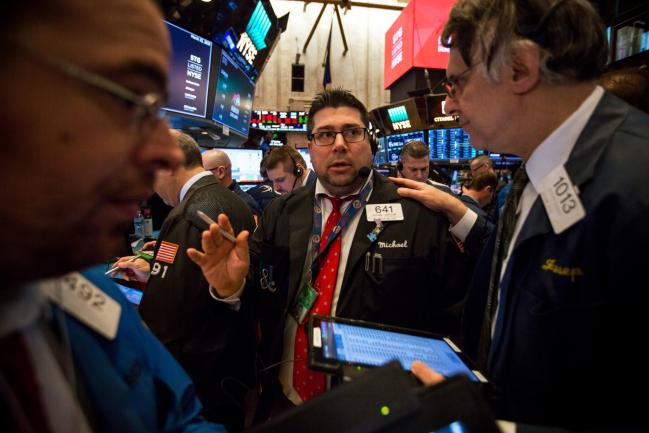(Bloomberg) -- Looming trade war or empty saber rattling?
How investors answer that question will likely set the tone on U.S. equity markets in coming weeks after a steady drumbeat of headlines from the Trump administration and China sent stocks on the wildest ride in years.
The conundrum was evident early Tuesday, when an overnight rally in S&P 500 futures gave way to a mixed open on the cash market, as the latest news tested Monday’s narrative that any trade war was over before it even began.
At fault were reports that the Trump administration was said to be considering cracking down on Chinese takeovers, while Commerce Secretary Wilbur Ross indicated Trump is planning “other action” on trade. Two days earlier, Treasury Secretary Steven Mnuchin all but signaled an armistice had been reached, the S&P 500 went on to post its best advance since 2015, and Trump promised that “all will be happy” in the end.
The rapid shift in sentiment is going to be the new normal, at least for a while, according to Krishna Memani, chief investment officer at OppenheimerFunds Inc.
“The bottom line is the trade issue and uncertainty related to that is not going to fade in one day because all of a sudden we started thinking that we would reach some sort of a settlement with China,” he said. “This is going to be somewhat of a long process for things to settle down.”
The knee-jerk reactions are overwrought, according to JPMorgan Chase & Co (NYSE:JPM).’s Dubravko Lakos-Bujas, who said last week’s dizzying selloff following Trump’s threat to impose tariffs on $50 billion of Chinese goods was an “irrational response.” The fundamental impact will be smaller than the market assumed, and the S&P 500 should continue to climb another 13 percent toward his year-end price target of 3,000, he said.
Viktor Shvets, head of Asian strategy at Macquarie, sits somewhat in the middle. He argues that a trade war isn’t looming, but the world is inching toward a more protectionist future that will make assessing investment strategies less straight forward.
“There is a huge difference between an inexorable slide towards de-globalization and an outright trade war,” he wrote in a March 27 note to clients. “The former is inevitable, the latter is unlikely, at least for a while. De-globalization and constraints on capital flows are now not anomalies, but are an integral part of the new investment climate. It implies that it is no longer possible to assess what is ‘safe’.”
The uncertainty is part of the reason Barclays (LON:BARC) is advising its clients to scale back their exposure to equity risk. Although trade isn’t the sole reason for the firm’s new “mild underweight” position, a confluence of events has it reassessing the conviction to hold stocks over bonds.
“It seems to us that the most important risks on both sides – sharply higher inflation and much tighter monetary policy, an economic recession, an economically costly ‘trade war’ or geopolitical event, and costly regulatory push-backs in systemically significant industries like tech – all pose larger threats to equities than to bond markets,” analysts, including the firm’s head of macro research Ajay Rajadhyaksha, wrote in a note Tuesday.
